Learn more about plants found in the Broomfield Xeriscape Demonstration Garden, located southeast of the George DiCiero City and County Building near the intersection of Descombes Drive and Spader Way.
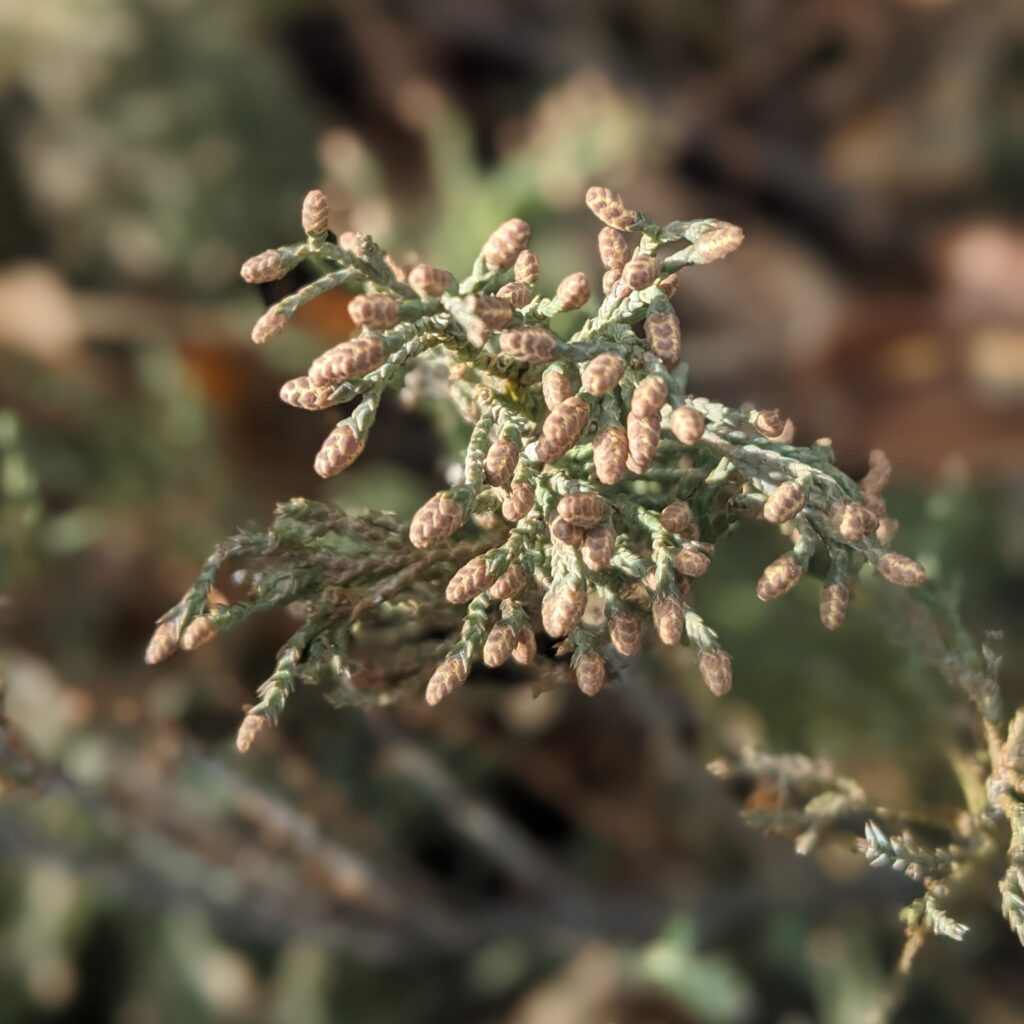
Junipers
Despite their reputation for overuse in the home landscape, junipers provide all-season interest and are a hardy choice. The Broomfield Demonstration Garden features two species:
- Medora Upright Rocky Mountain Juniper Juniperus scopulorum ‘Medora’
- Youngstown Spreading Juniper
Juniperus horizontalis ‘Youngstown’
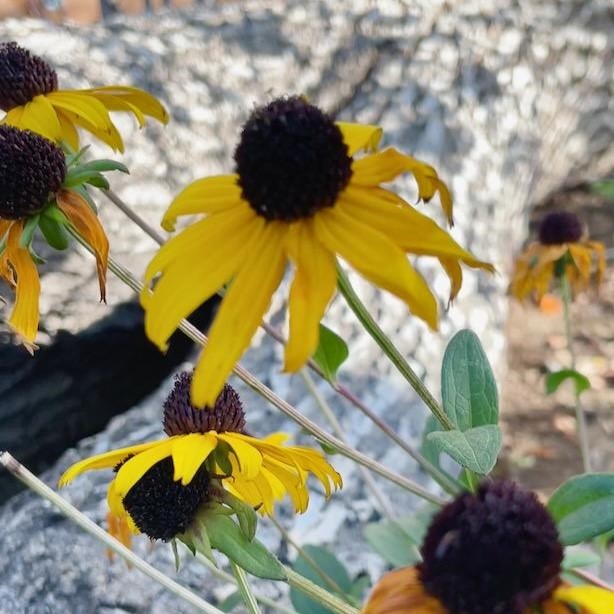
Black-Eyed Susan
There are many members of the genus Rudbeckia that share the common name Black-Eyed Susan, including Rudbeckia fulgida.
With yellow to orange petals, depending on the cultivar, this perennial Black-Eyed Susan is native to North American meadows, woods, and pastures. It’s a sun-loving plant that thrives in almost any soil and needs very little water once established.

Sweet Woodruff
If you’re looking for a sweet-smelling, shade-loving groundcover, consider the Sweet Woodruff. Also called Sweet-Scented Bed Straw, this madder relative is 6-10 inches tall with pretty 4-petaled white flowers in May and early June. The charming whorls of leaves are scented like vanilla and freshly-mown hay, especially on sunny warm days. The scent and its fly-repelling quality make Sweet Woodruff a nice choice to plant near a seating area.
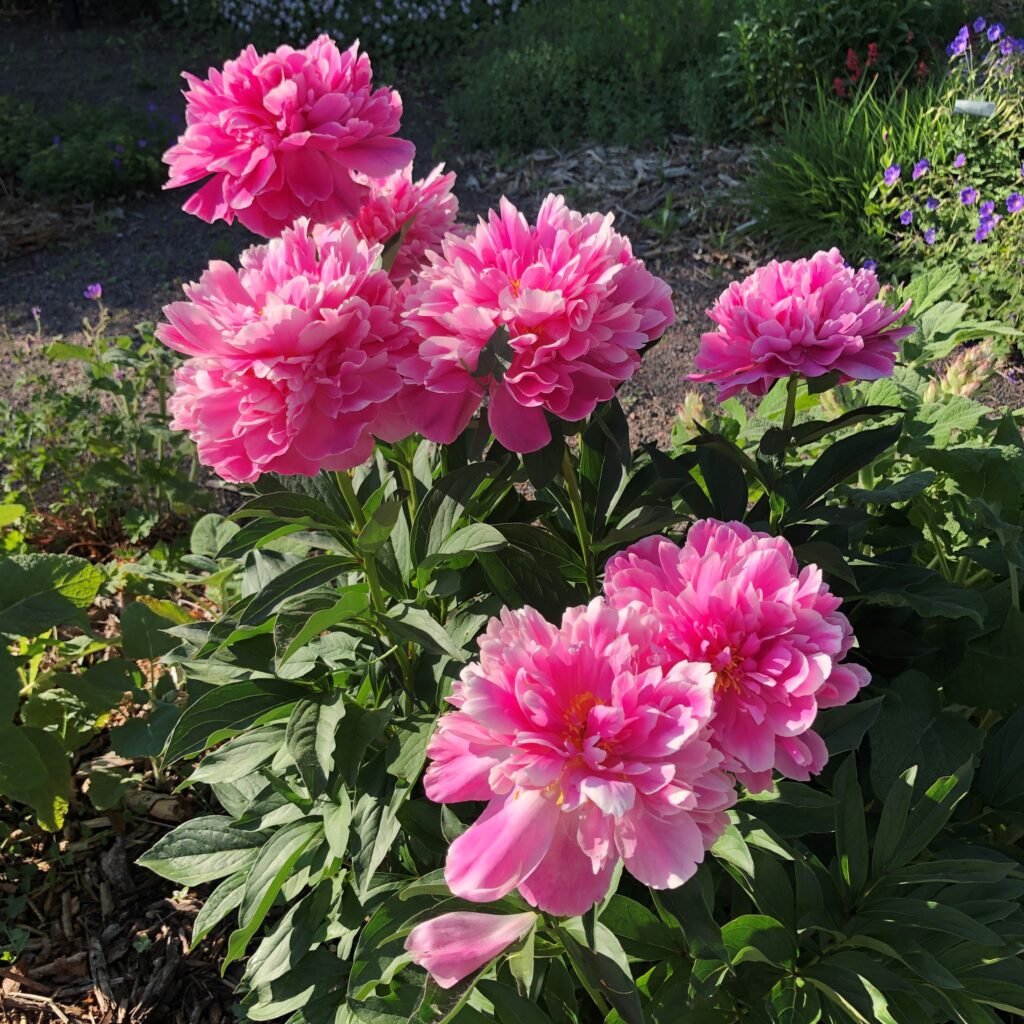
Herbaceous Peony
Although most gardeners might not consider the showy peony to be a xeric plant, they are surprisingly drought tolerant and bloom locally in May or June, depending on weather patterns. Native to Asia, Europe and North America, peonies are categorized into three groups based on their growth habit. Herbaceous peonies are the most popular type for the home gardener and perform best in full sun and loamy, well-draining soil.
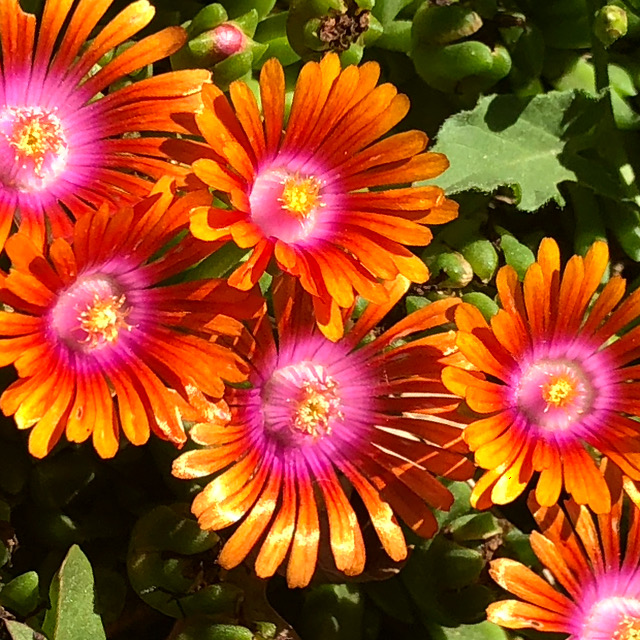
Ice Plant
Late spring is a time when many of our plants are just getting started in their growing season. However, the somewhat ironically named ‘ice plants’ are already thriving. The low-growing groundcovers are available in many varieties, including Delosperma Fire Spinner® (shown left), that can add a beautiful splash of color from spring to fall in any garden.
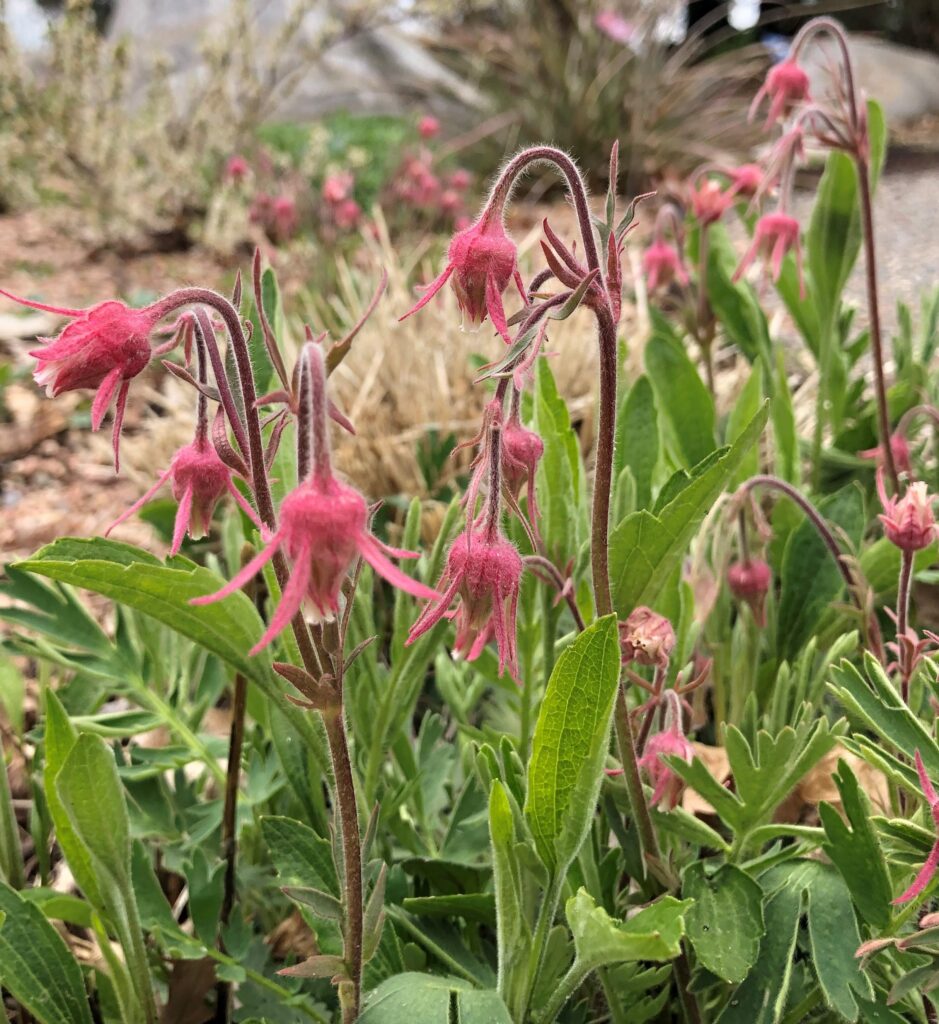
Prairie Smoke
Prairie Smoke is a featured Xeriscape plant for the month of May. With its pink nodding flowers and fern-like leaves, Prairie Smoke is a lovely and hardy addition to your xeric or rock garden.
Blooming from late spring to early summer, the flowers become feathery pink seed heads showcasing the plant’s smoky appearance that inspired its common name.
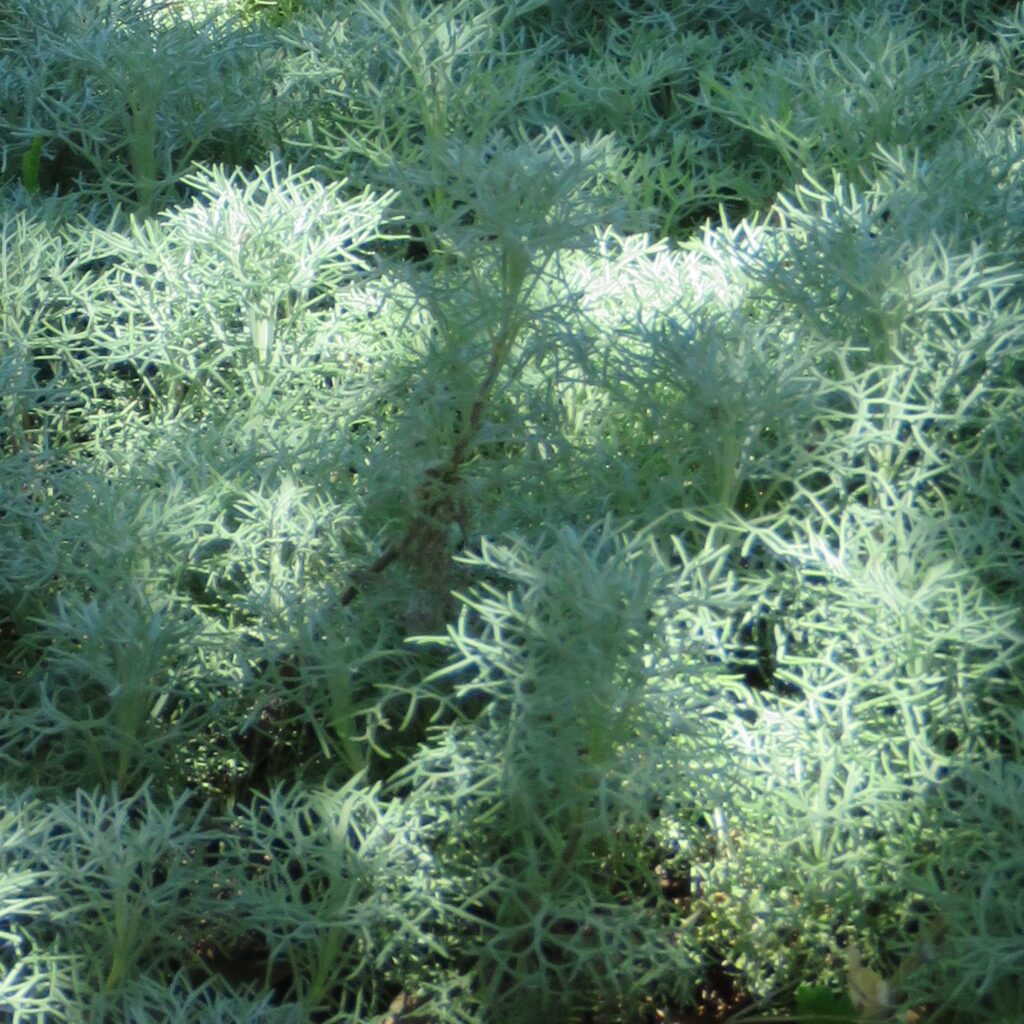
Sea Foam Sage
While Colorado has many beautiful landscapes, one aspect that is missing from our wonderful state is the beauty of seafoam rolling in on ocean tides. However, you can bring a little bit of the ocean to your landscape with Sea Foam Sage. The perennial’s thin, lacy, silver/green leaves provide unique texture to xeric gardens as well as winter interest. Look for the low-growing, mounding groundcover in the Whimsical Bed at the Broomfield Xeriscape Demonstration Garden.
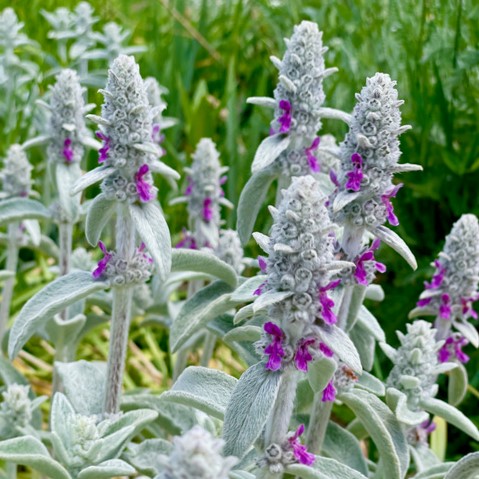
Lamb’s Ear
Beloved by gardeners for its fuzzy leaves and silvery-green color, Stachys byzantina adds both texture and contrast to any Colorado garden. Originally from the Middle East, ranging from Iran to the Caucasus, Lamb’s Ear has become a staple in cottage-style gardens in Europe and North America. But its appeal is wide-ranging, and it is at home in many gardening contexts.
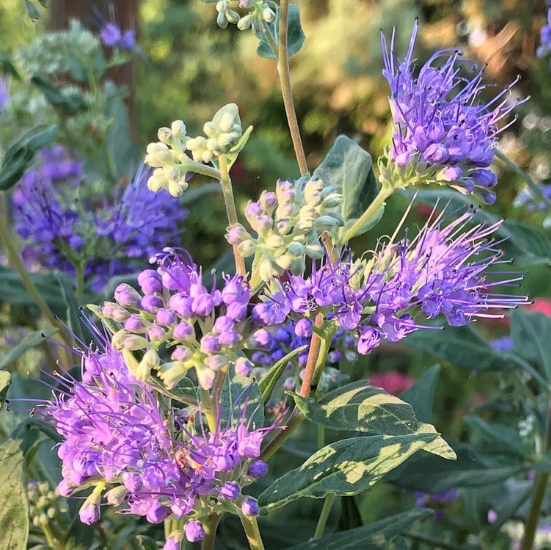
Blue Mist Spirea
Originally from the Himalayas and mountains of East Asia, Blue Mist Spirea (commonly known as Blue Spirea and Bluebeard) is a low-maintenance, xeric plant that can be utilized in many garden settings. It thrives in Colorado landscapes, attracting bees, butterflies, and other pollinators, and is a nice addition to cut flower arrangements.
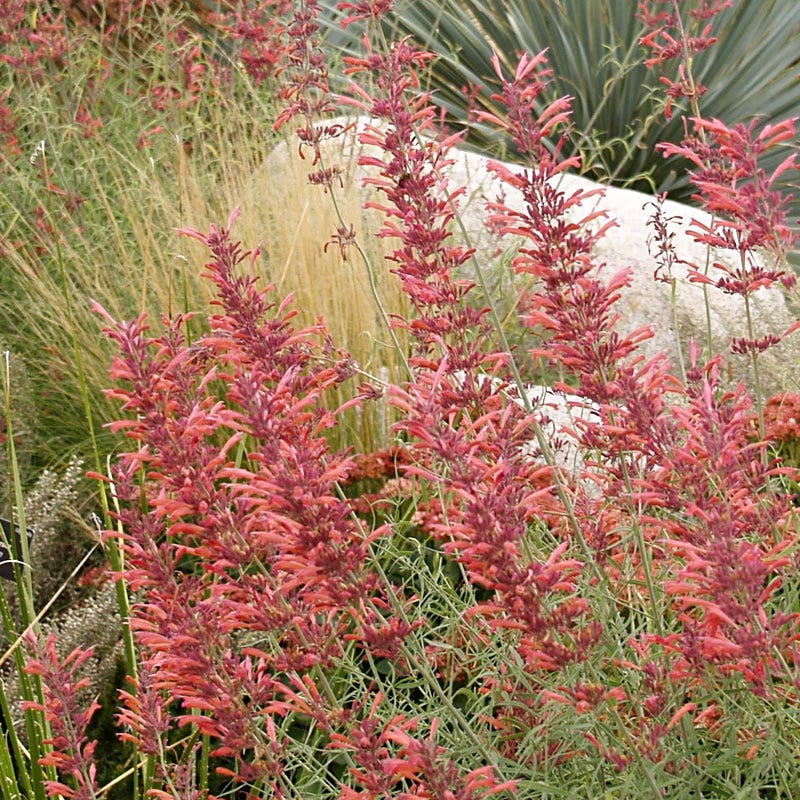
Sunset Hyssop
This drought tolerant and long-blooming herbaceous perennial goes by many common names such as Threadleaf Giant Hyssop, Rock Anise, Hummingbird Mint, and Licorice Mint, but you will always know it by its anise or root beer scented flowers and foliage.
A must-have for any hummingbird garden, the Sunset Hyssop has a long bloom period (summer to fall) in which it is covered in brilliantly colored flowers.
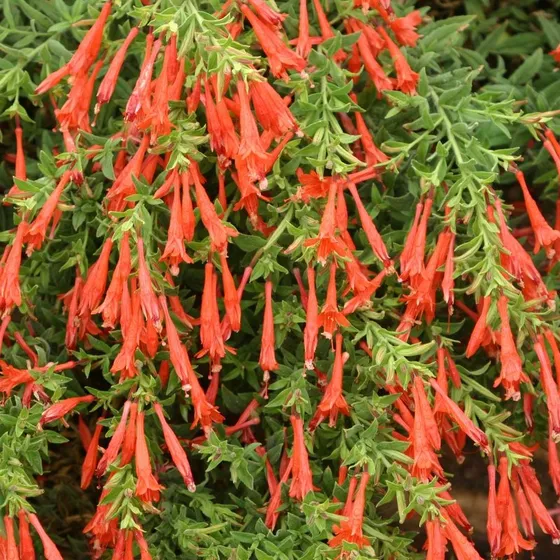
Orange Carpet Hummingbird Trumpet
If you have been looking for the one plant that will attract hummingbirds to your yard, the Plant Select ® 2001 Orange Carpet Hummingbird Trumpet may be that plant. From the species Zauschneria garrettii ‘Orange Carpet’, this herbaceous, perennial ground cover grows fast from rhizomes (horizontal underground stems).
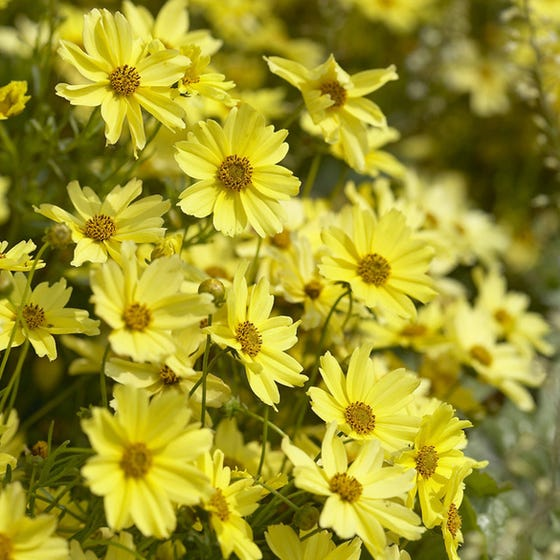
Tickseed
A perennial stalwart for the garden is Tickseed (Coreopsis spp.) in the Asteraceae family. They form 1-2 foot mounds that are easy to grow in fall or spring. An added bonus is that most are deer resistant, cold and heat tolerant, and xeric once established.
There are many species to choose from that are adaptable to most Colorado soils and native to the West. They bloom from June to September, with some blooming into October.

Sea Holly
Sea Holly is an interesting xeric plant family (Eryngium), especially if you are looking for striking blue-purple flowers. Although not true hollies, the cones look similar. They have a distinctive bract collar which adds great interest.
A few varieties of Sea Holly are adapted to the Front Range and tolerant of drought, high winds, cold, and heat.
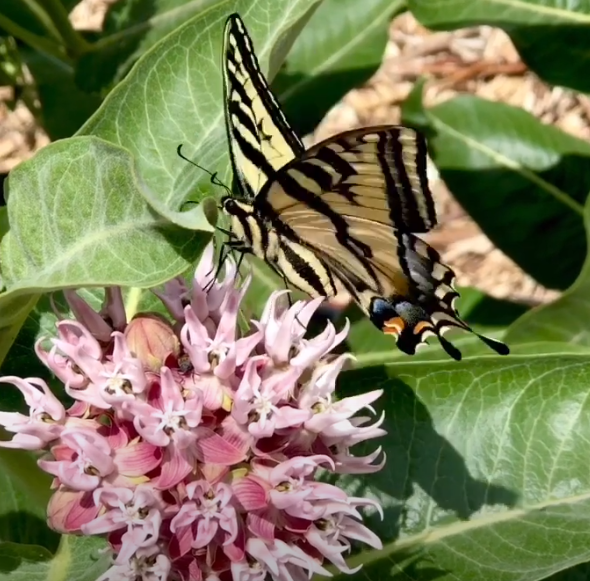
Milkweed
Native to Colorado, showy milkweed and common milkweed play an important role as hosts to monarch (and other) butterflies, and there’s an added bonus. They’re easy-keepers! Well-adapted to different soil types and thriving in full sun, milkweeds also are extremely cold hardy and overwinter without any special maintenance.
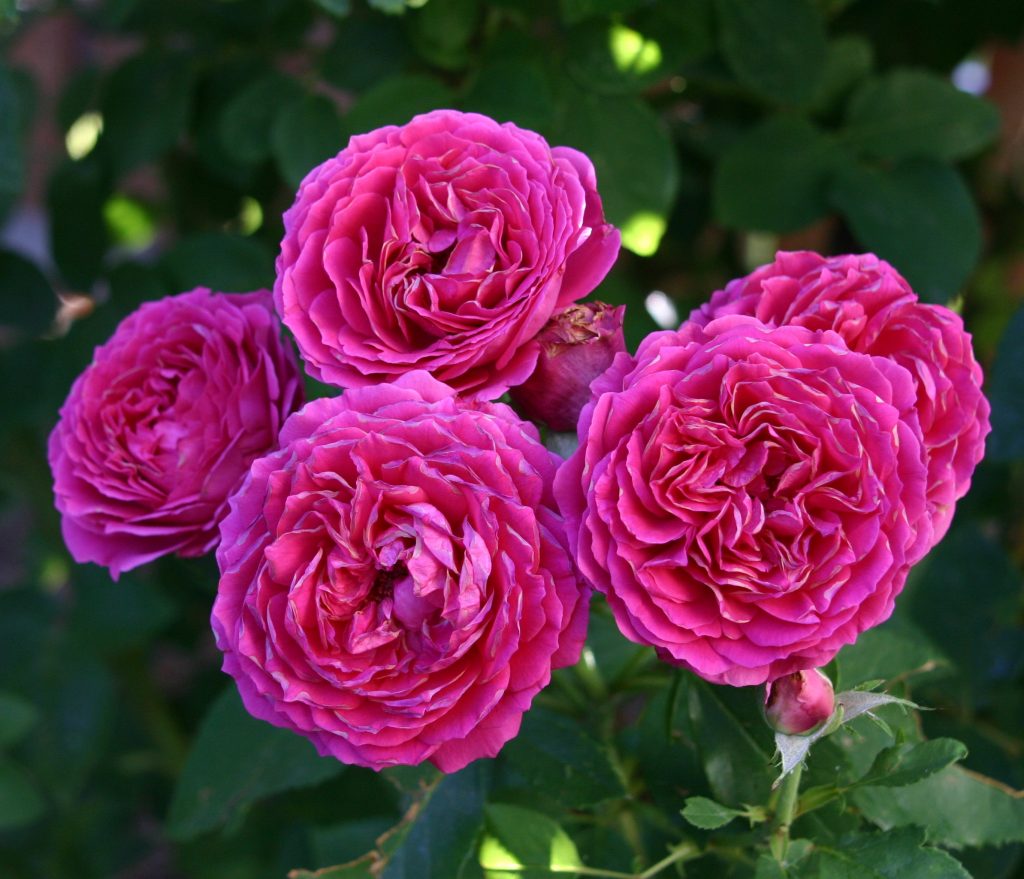
Ruby Voodoo Rose
Ruby Voodoo Rose is a wonderful addition to a xeric garden, providing intense fragrance and large multi-toned double blossoms. It blooms first in late spring and then repeats moderately through the summer.
Ruby Voodoo was chosen as a Plant Select specimen due to its vigorous and attractive growth habit as well as its great disease resistance.
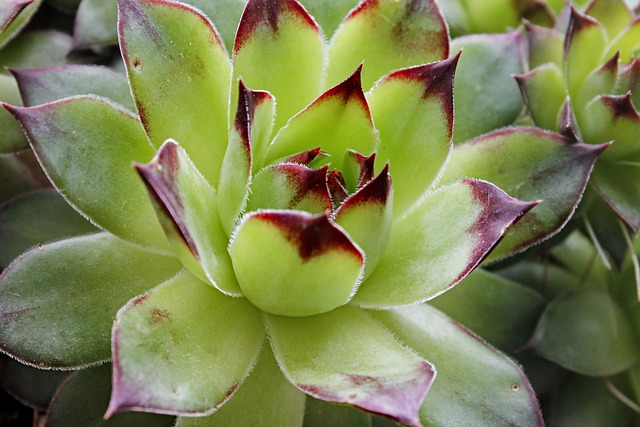
Hens & Chicks
There are many species and cultivars of Sempervivum, commonly called Hens and Chicks or Houseleeks. Because they are a hardy succulent, they have fleshy leaves in a rosette shape that varies in size, shape, color, and texture.
Colors can be various shades of green, pink, and red. Some Sempervivum have cobwebbing on their leaves!

Dwarf Lavender
Dwarf lavender plants are varieties of English Lavender, Lavandula angustifolia, that grow well in Colorado climates, even those with slightly poor, alkaline soils.
Foliage is gray-green, and flowers range from dark purple to blue-purple to light purple. All varieties have aromatic scents and are well suited as hedges, borders, containers, or en masse for swaths of color.
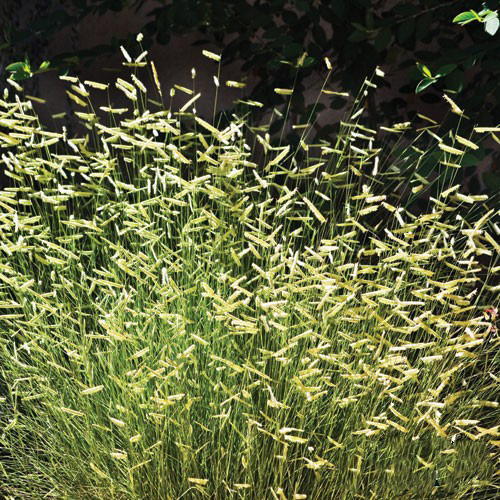
Blue Grama
Blue Grama Grass, Bouteloua gracilis, is the official state grass of Colorado. It’s a native prairie grass important for animal foraging, preventing soil erosion, and providing food for various birds, butterflies and moth caterpillars.
In the home garden, varieties of Bouteloua gracilis may be used as ornamental grasses, in rock garden groupings, or as a low-traffic lawn alternative.
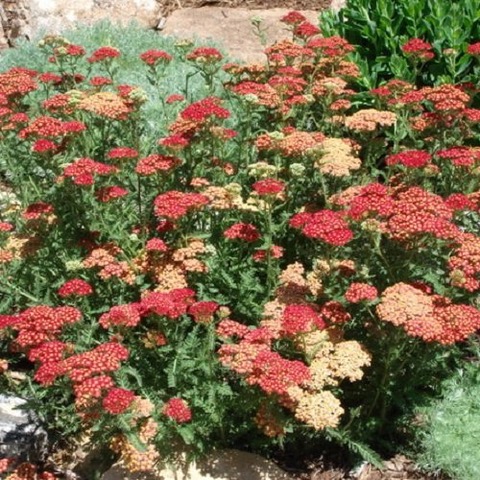
Yarrow
Yarrow, a member of the Aster family, is a colorful, perennial group of plants. The Latin name Achillea is thought to reference Achilles of Troy, an early botanist who used yarrow to treat his wounded soldiers.
Many varieties are available in various shades from white and lilac, to yellow, orange, and red. Best of all, yarrow is virtually pest and disease free and tolerant of drought, salt, and cold.
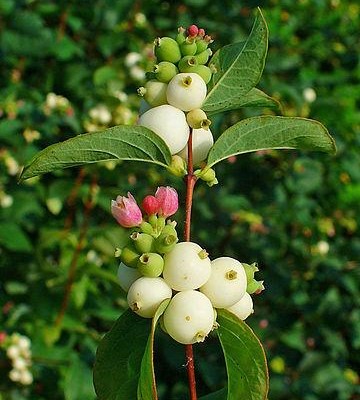
Common Snowberry
What’s in a name? Plenty, in the case of the Common Snowberry’s scientific name: Symphoricarpos albus. The Latin “symphori-” means connected or together, and “carpos” means fruit. “Albus” means white.
Long after its small pink flowers have fallen in late summer, the Snowberry also stands out in winter with the contrast of white berries against bare brown stems.
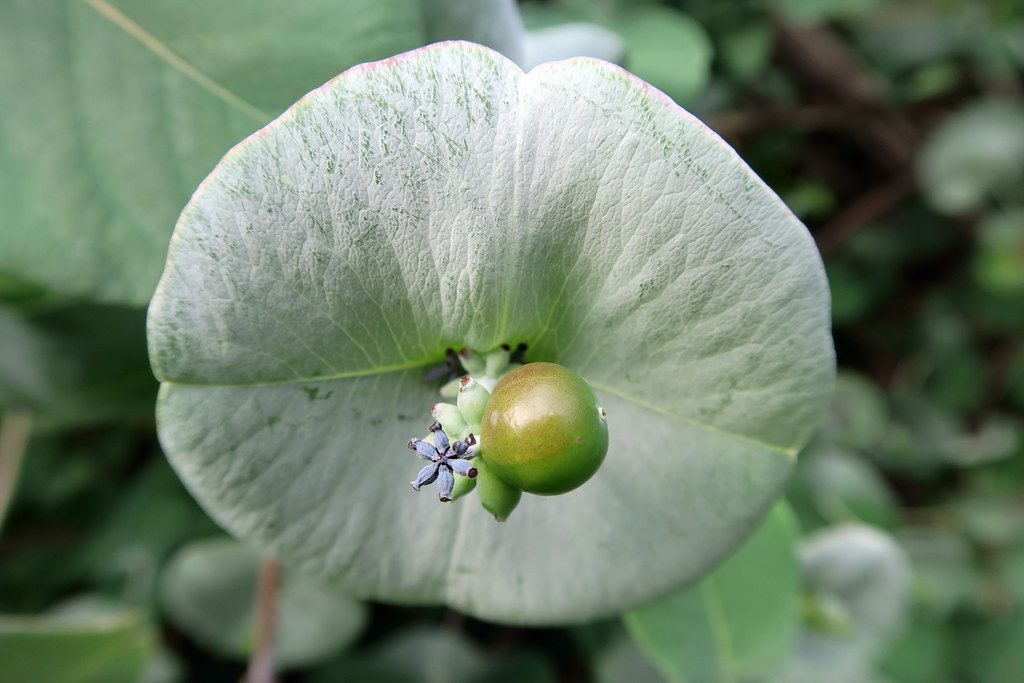
Kintzley’s Ghost® Honeysuckle
A delightful addition to a xeric garden is Kintzley’s Ghost® honeysuckle, a family heirloom plant recently brought back into cultivation. It is a hardy honeysuckle vine with showy silver bracts that last all summer long. Once established it is very low maintenance.
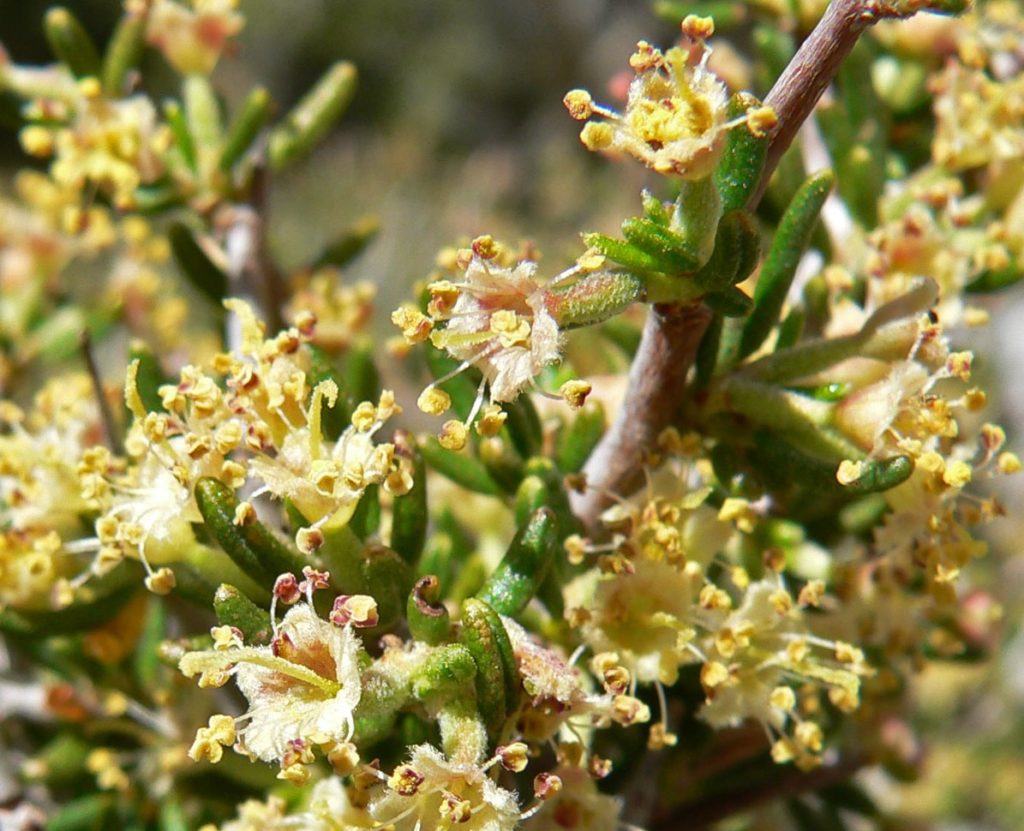
Littleleaf Mountain Mahogany
For gardeners looking for an evergreen shrub to brighten their landscape year-round, consider adding the Littleleaf Mountain Mahogany. This plant is both a Colorado native and a Plant Select® introduction, offering these features:
- Up to 5 feet tall, 3-4 feet wide
- Fragrant, yellow flowers in the spring and feathery seed plumes in the fall
- Requires no additional irrigation once established (about two years)
- Attracts pollinators
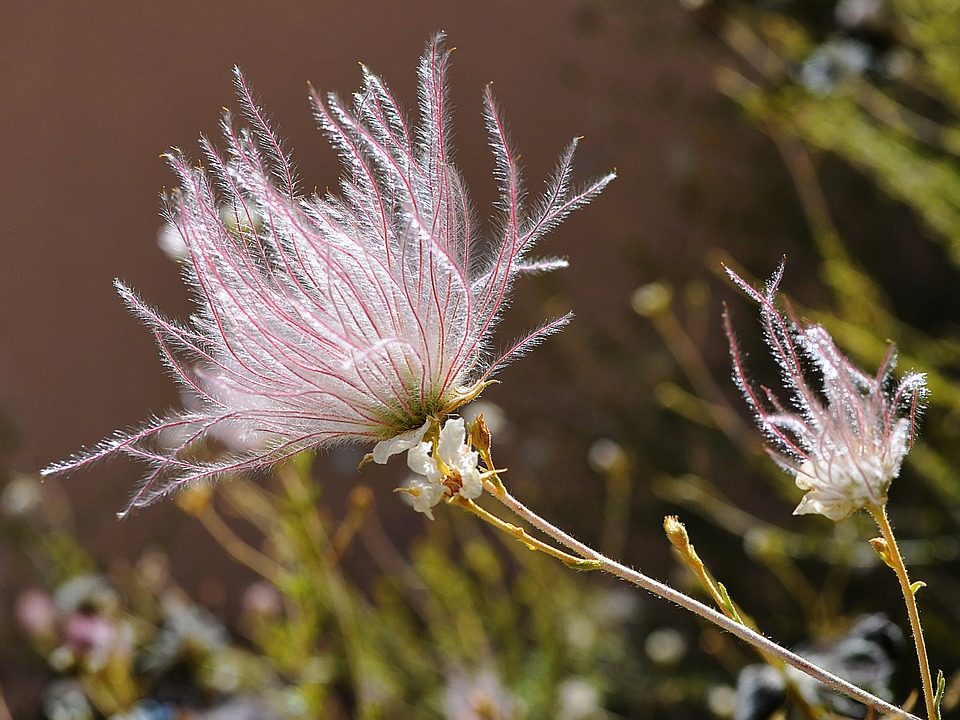
Apache Plume
A native plant to Colorado and throughout the Southwest, Apache Plume is growing in popularity thanks to its special attributes:
- Up to 4 feet tall
- White, rose-like flowers transform to pink, feathery seed heads
- Very drought tolerant and attracts birds, bees and butterflies
- Blooms June through August

Wine Cups
Wine Cups, the featured Xeriscape plant for the month of June, offer a trifecta of benefits to your Xeric garden:
- As a ground cover, they are an attractive alternative to mulch or rocks.
- They are colorful and bloom from late spring to late summer.
- They need only minimal care and water.

Torch Lily
The featured Xeriscape plant for September is the Torch Lily, commonly known as the Red Hot Poker. This herbaceous perennial plant is known for its upright, tubular flower spikes which emerge from clusters of green, grass-like foliage. The Torch Lily blooms from the base and spikes upward displaying beautiful bi-colored red, orange or yellow “torches.”
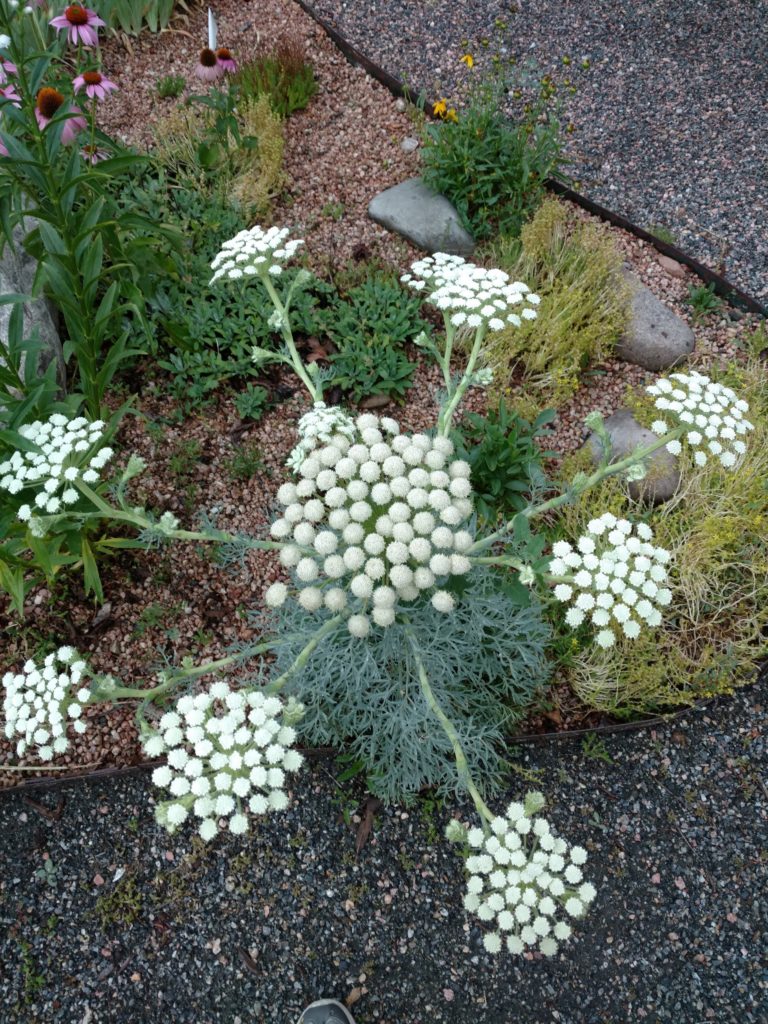
Moon Carrot
Moon carrot, in bloom during late summer at Broomfield’s Xeriscape Demonstration Garden, Demonstration Garden, offers an interesting mix of textures and thrives in various conditions. It will grow in full sun to partial shade, is adaptive to clay, loamy or sandy soil, and requires moderate to Xeric watering.




